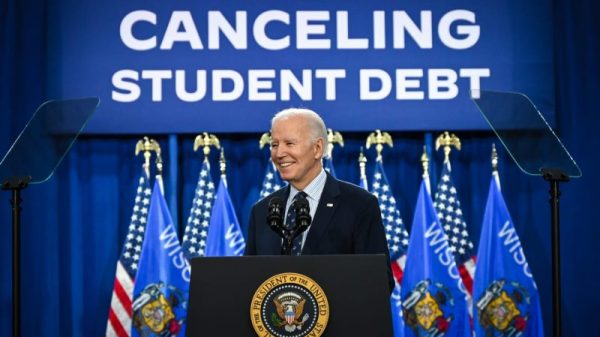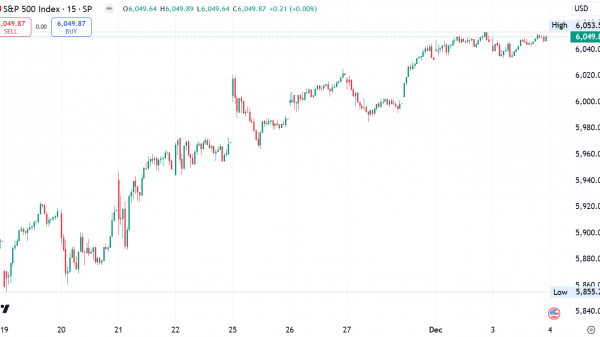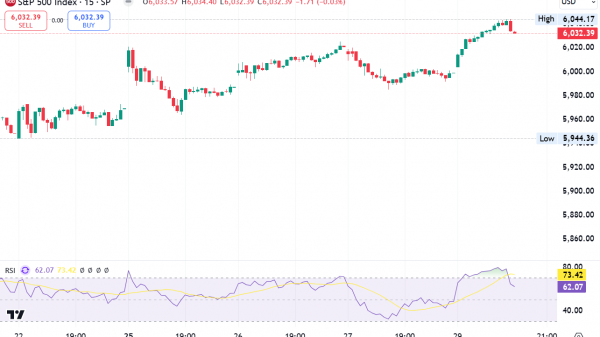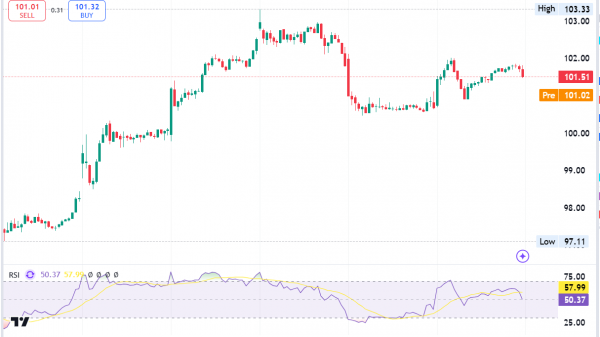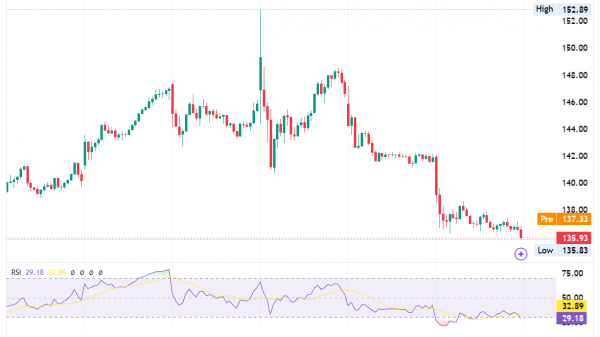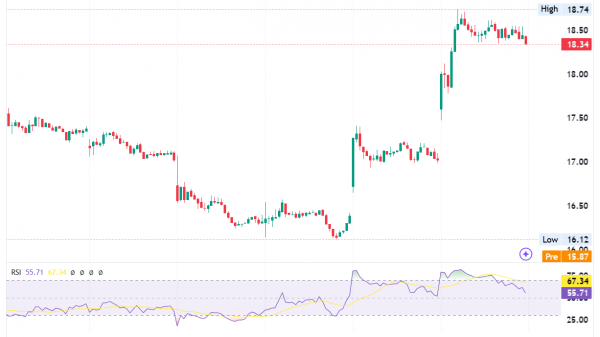With the 2023 off-year elections over, the runway is clear to the 2024 general. Sure, there are still primaries, although there doesn’t seem to be much mystery about how those will unfold. But the next major Election Day in the United States will be the one in which we pick our next president.
Given that, and given the universality of interest in that decision, it’s useful to pick through Tuesday night’s results for any indicators of what might unfold, modern-day augurs digging into the entrails of data and anecdotal reports.
As with the fortunetellers of old, though, the future is hard to predict, however boldly one pronounces it.
Nonetheless, here are some patterns that seem notable.
President Biden is awfully unpopular. YouGov’s polling has his approval at about 42 percent, and that’s relatively good compared to other polls. And yet others in his party fared well this week, gaining control of the legislature in Virginia, the governorship in Kentucky and a Supreme Court seat in Pennsylvania.
In part, this is a function of the divide we’ve seen since early in Biden’s tenure: His party and Democratic candidates are often viewed more positively than Biden himself.
Politics has gotten increasingly nationalized over the past several decades but — happily for Democrats — that doesn’t mean that their party is universally painted with the distaste that Americans feel for the president.
We can see that pattern just among Democrats. Members of Biden’s party view his presidency with less approval than they view the party favorably or than they plan to support Democratic candidates in the next congressional election. There’s more party loyalty on voting than there is on Biden’s effectiveness in the White House.
That’s good for Democrats in Ohio, Virginia and Kentucky, certainly, but it’s not clear whether it’s good for Biden. Recent polling shows that the incumbent is seeing softer support against former president Donald Trump from traditional Democratic constituencies than might be expected, a reflection of apathy about his presidency.
The question for 2024, then, becomes whether dislike of Biden has more of an effect on how many votes he gets than the broader support for his party’s positions and priorities.
Elections come down to turnout — a statement that is so generic that you probably can’t read the rest of this sentence because your eyes rolled back in your head. But it’s true, obviously: Who wins depends on who comes out to vote.
One of the things we saw Tuesday was that turnout was down relative to past elections. In Kentucky, about 1.32 million votes were cast in the governor’s race (as of the most recent count), compared to 1.44 million when Gov. Andy Beshear (D) first won election four years ago.
In Ohio, about 3.86 million ballots were cast on Issue 1, the proposed constitutional amendment protecting access to abortion, compared to 4.14 million votes cast in the state’s Senate race last year. Yet the Democrats (and the Democratic side on the abortion issue) did well.
This raises an obvious question: Does the lack of Donald Trump on the ballot depress Republican turnout in ways that advantage the left? (Rural precincts saw a bigger drop in turnout than urban ones, according to analysis from The Washington Post’s Lenny Bronner.)
Or is this a function of the increasing reliance of the Democratic Party on college-educated voters, voters who historically turn out more consistently and therefore might be overrepresented in off-year contests?
In either case, it’s not great for Biden. If Trump is his opponent in 2024, as seems likely, Trump voters will come out to vote. If Tuesday’s electorate included more high-propensity Democratic voters, it means that there are fewer Democratic voters to be mobilized — for an election featuring the not-terribly-popular Democratic president.
As soon as networks called Beshear’s reelection, pundits were considering it in the context of Biden’s reelection bid. After all, here was a Democratic governor in a red state who’d at times embraced Biden’s policies and not shied away from his party.
Did it suggest that there was an appetite for other moderate Democrats (cough, cough Biden) in other non-Democratic-friendly places?
Perhaps. But Beshear’s race was unique for a few reasons. He was running against a Trump-adjacent Republican, though not one who could mobilize Trump-loyal voters (if any non-Trump can, which seems not to be the case).
Beshear is also popular in his state, even with a chunk of the GOP. He’s also the son of a well-regarded former governor; Kentuckians have been voting for Beshears for decades.
More important are the results in Virginia. There, Gov. Glenn Youngkin (R) pushed a ban on access to abortion after 15 weeks, something he and his allies framed as a middle ground in the contentious debate.
It didn’t do him any good. Democrats retained the state Senate and gained control of the House of Delegates. If Virginia was a referendum on abortion politics, the message isn’t hard to determine.
In Ohio, of course, it’s clearer. Asked whether the state should protect abortion access in its Constitution, voters said yes.
The counties that shifted the most relative to their 2020 vote were ones that voted for Trump in 2020. Only one county — rural Putnam County — saw a smaller margin for “no” on Issue 1 than it did for Trump.
In every other county, the opposite was true: “No” fared worse than Trump (or “yes” better than Biden), often by a lot. In Coshocton County, Trump won by 49 points but “no” won by only 5.
The question is whether this was Trump voters flipping to vote for “yes” or whether it was Trump voters staying home. It’s a bit hard to determine without seeing voter-level results, but we can see that turnout was down relative to 2020 everywhere.
In 34 of the state’s 88 counties — all of which backed Trump in 2020 — the number of votes cast for “yes” exceeded the number of votes received by Biden.
On average, those counties backed Trump by 48 percentage points. In no county was the ratio of “no”-to-Trump votes higher than the ratio of “yes”-to-Biden votes. In every county, fewer votes were cast for “no” than for Trump in 2020.
Again, this is different than Virginia simply because it was a literal yes-or-no question on abortion access. But it suggests that there was at least some willingness by Trump voters to support abortion access.
Since the 2016 election, there’s been a great deal of attention paid to the accuracy of polling. That year, after all, state-level presidential polls underestimated Trump’s support, leading to an expectation that Hillary Clinton was all but certain to win the presidency. Some of this was a function of how people interpreted the polls, certainly, but it was nonetheless the expectation.
In 2020, there were errors that led to an overestimation of Biden’s chances. He still won, but it was closer than it might have been expected to be.
But in every other major election, the polls have generally been accurate to the point of broad predictiveness. They were accurate in 2018 and in 2022, though, again, perceptions of the 2022 polling often created a different set of expectations than what the polls showed.
On Tuesday, the early call for Beshear prompted some murmuring that the polls were again wrong, though it’s not clear why. There weren’t a lot of polls in Kentucky, but most showed Beshear winning by a single-digit margin, which he did.
This ties back into the question of the role Trump’s presence on the ballot plays on both polls and expectations. It also raises questions about 2024 polls: Will they look like 2020 or like 2022?
Since Trump’s election seven years ago:
Dems have had the overall ‘better’ election night/cycle in 2017, 2018, 2019, 2020, 2022, and 2023.
Republicans in 2021.
— Taniel (@Taniel) November 8, 2023
One of the safest predictions one can make about an election is that they will prompt a lot of quick and easy assessments of the results that tend to align those results with the political motivations of the prediction-makers.
Consider the offering from right-wing pundit Mark Levin. Levin argued that the results on abortion were because “the Democrat[ic] Party and their surrogates spend for [sic] more on TV ads than the GOP spends on this issue. … People are voting on the propaganda they are being fed, not the actual issue.”
Oh, and Beshear won in Kentucky because his Republican challenger was insufficiently close to Donald Trump, a tactic that served Sen. Herschel Walker (R-Nowhere) well last year.
On the other side, there’s been a lot of enthusiasm about the importance of the Kentucky results. After all, the winner of the governor’s race in that state mirrored the partisanship of the winner of the presidency the following year in each of the past five cycles. But these sorts of patterns pop up a lot in politics and are no more predictive than analyses that depend on the winner of the Super Bowl or what have you.
Biden could win next year, of course, giving Kentucky its sixth straight prediction. But doing so will depend on his ability to get voters to come out and support him based on his opponent or his party’s priorities. It will depend on whether 2024 and its candidates are viewed as proxies for or enablers of access to abortion. And it will depend on whether Trump continues to turn out his base when he’s on the ballot.
As I said: It’s murky.






